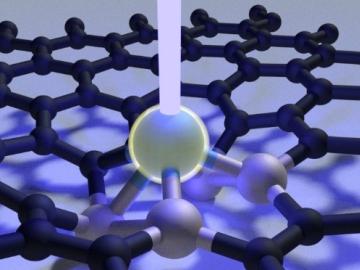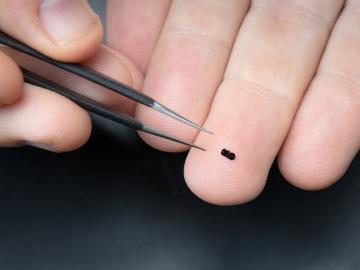
Filter News
Area of Research
- (-) Materials (97)
- (-) Materials for Computing (12)
- (-) Nuclear Science and Technology (3)
- Advanced Manufacturing (5)
- Biological Systems (2)
- Biology and Environment (65)
- Biology and Soft Matter (1)
- Building Technologies (2)
- Computer Science (3)
- Electricity and Smart Grid (3)
- Energy Science (119)
- Energy Sciences (1)
- Functional Materials for Energy (1)
- Fusion and Fission (10)
- Fusion Energy (1)
- National Security (13)
- Neutron Science (20)
- Quantum information Science (3)
- Sensors and Controls (1)
- Supercomputing (32)
News Topics
- (-) Bioenergy (13)
- (-) Chemical Sciences (36)
- (-) Grid (5)
- (-) Microscopy (31)
- (-) Physics (30)
- 3-D Printing/Advanced Manufacturing (30)
- Advanced Reactors (14)
- Artificial Intelligence (9)
- Big Data (2)
- Biology (5)
- Biomedical (10)
- Buildings (5)
- Clean Water (3)
- Composites (10)
- Computer Science (26)
- Coronavirus (8)
- Critical Materials (13)
- Cybersecurity (5)
- Energy Storage (38)
- Environment (17)
- Exascale Computing (2)
- Frontier (3)
- Fusion (15)
- High-Performance Computing (4)
- Irradiation (1)
- Isotopes (17)
- ITER (1)
- Machine Learning (5)
- Materials (83)
- Materials Science (94)
- Mathematics (1)
- Molten Salt (7)
- Nanotechnology (46)
- National Security (4)
- Neutron Science (43)
- Nuclear Energy (49)
- Partnerships (11)
- Polymers (23)
- Quantum Computing (4)
- Quantum Science (14)
- Security (3)
- Simulation (2)
- Space Exploration (8)
- Summit (3)
- Transportation (19)
Media Contacts

Five researchers at the Department of Energy’s Oak Ridge National Laboratory have been named ORNL Corporate Fellows in recognition of significant career accomplishments and continued leadership in their scientific fields.

Oak Ridge National Laboratory researchers have built a novel microscope that provides a “chemical lens” for viewing biological systems including cell membranes and biofilms.

In the search to create materials that can withstand extreme radiation, Yanwen Zhang, a researcher at the Department of Energy’s Oak Ridge National Laboratory, says that materials scientists must think outside the box.

Oak Ridge National Laboratory researchers have developed a thin film, highly conductive solid-state electrolyte made of a polymer and ceramic-based composite for lithium metal batteries.

As a teenager, Kat Royston had a lot of questions. Then an advanced-placement class in physics convinced her all the answers were out there.

Scientists at Oak Ridge National Laboratory used a focused beam of electrons to stitch platinum-silicon molecules into graphene, marking the first deliberate insertion of artificial molecules into a graphene host matrix.

Energy storage startup SPARKZ Inc. has exclusively licensed five battery technologies from the Department of Energy’s Oak Ridge National Laboratory designed to eliminate cobalt metal in lithium-ion batteries. The advancement is aimed at accelerating the production of electric vehicles and energy storage solutions for the power grid.

Liam Collins was drawn to study physics to understand “hidden things” and honed his expertise in microscopy so that he could bring them to light.

Scientists at have experimentally demonstrated a novel cryogenic, or low temperature, memory cell circuit design based on coupled arrays of Josephson junctions, a technology that may be faster and more energy efficient than existing memory devices.

Researchers at the Department of Energy’s Oak Ridge National Laboratory have received five 2019 R&D 100 Awards, increasing the lab’s total to 221 since the award’s inception in 1963.


